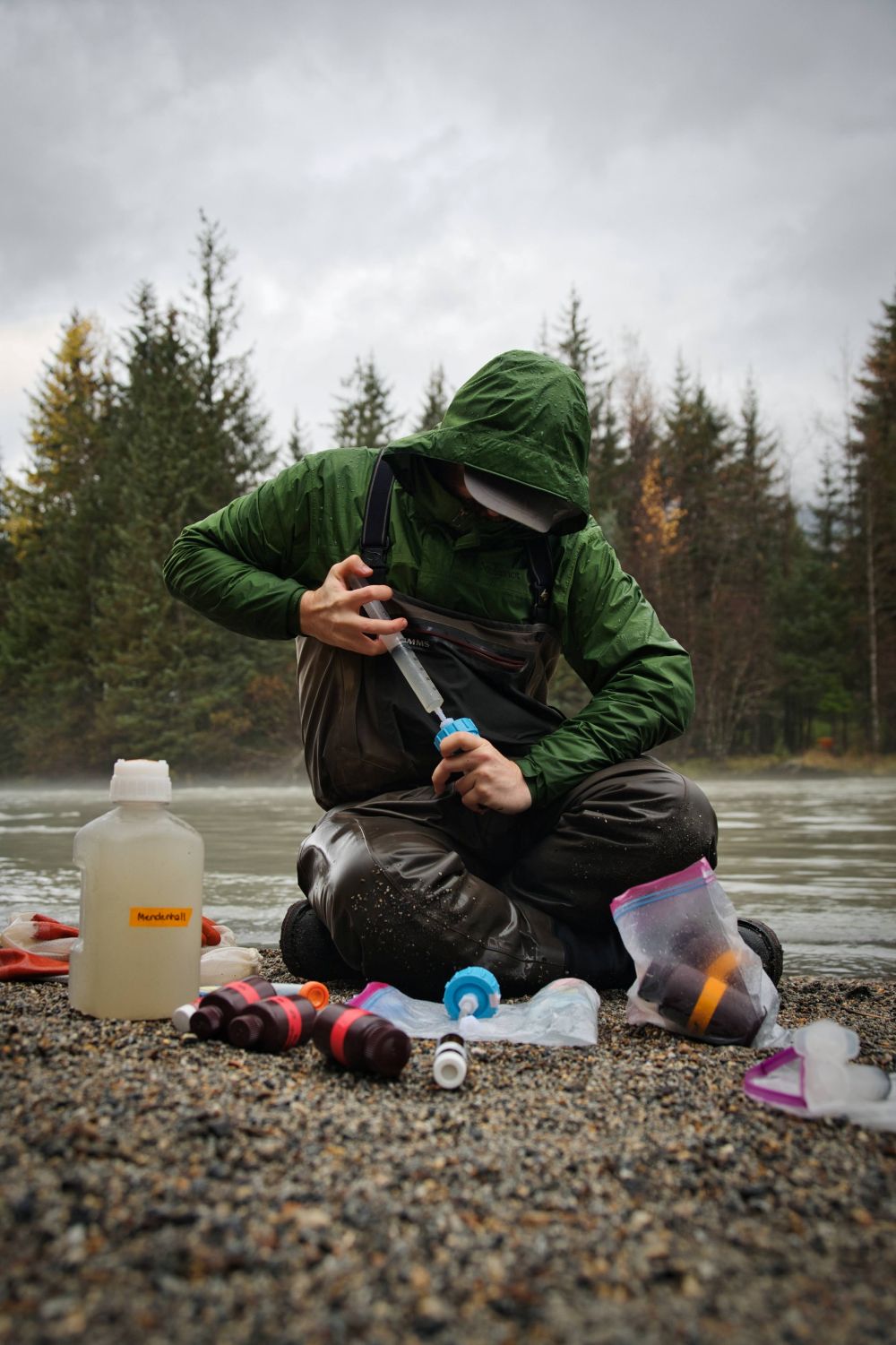Changing Watersheds, Changing Nutrients: Glacier Loss and Coastal River Chemistry

As glaciers retreat across the Gulf of Alaska’s coastal mountains, the flow of nutrients from land to sea is being reshaped, potentially transforming nearshore food webs that support fisheries, marine mammals, and seabirds. In a new multi-year study, ACRC researchers Jason Fellman, Eran Hood, Emily Whitney and colleagues investigated how glacier loss and shifting hydrology are altering patterns of nitrogen, carbon, and phosphorus export from coastal mountain catchments into the Gulf of Alaska. The research, published in Nature Communications Earth & Environment, offers new insight into how watershed nutrient dynamics are changing in a future with vanishing glaciers.
The team monitored ten coastal catchments in Lynn Canal and Kachemak Bay, spanning a range from heavily glacierized basins to low-elevation, rain-dominated forested watersheds. These sites represent diverse precipitation regimes, vegetation cover, and underlying geology, providing a valuable gradient to understand how glacial coverage influences stream chemistry. They collected monthly surface water samples during the main glacial melt season, measuring concentrations of dissolved organic carbon, nitrogen, and phosphorus, and monitored and modeled each stream’s discharge data across a 3-year period in Kachemak Bay sites and a 5-year period in Lynn Canal sites.
The study found that biogeochemical stoichiometry, the relative ratios of carbon, nitrogen, and phosphorus, and relationships between discharge and nutrient concentrations varied strongly with glacier coverage, suggesting that glacier retreat is fundamentally altering nutrient ratios and export patterns. These shifts have potential consequences for downstream food webs, as nutrient ratios influence primary productivity and can exert strong bottom-up controls on higher trophic levels, especially in low-productivity river systems. The consistency of these findings across both Lynn Canal and Kachemak Bay catchments also suggests that similar patterns may emerge globally in glacier- and snowmelt-dominated watersheds experiencing hydrologic change.
By linking long-term hydrologic monitoring with detailed nutrient analysis, this research demonstrates the broad impacts of glacier retreat on riverine nutrient dynamics and the importance of understanding their downstream effects on coastal ecosystems.